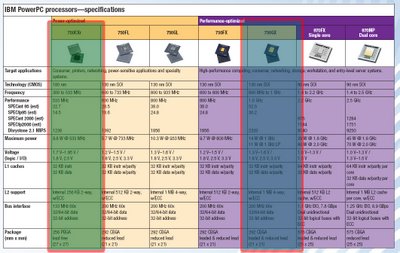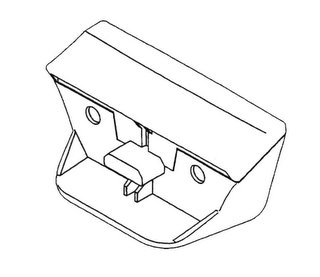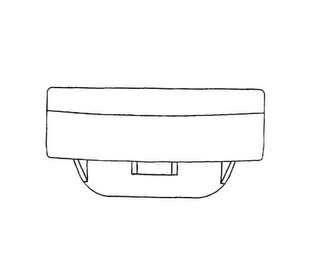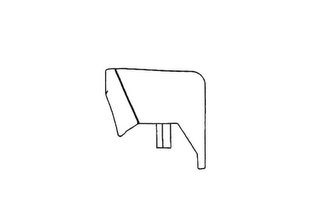I really appreciate all the sites that have referred to my blog. Thank you very much.
The unique objective of this blog is to bring interesting information to you that I have read in different sites and patents, also to post my thoughts in these topics. I try to make my analysis based on facts from reliable sources and from patents. I also take ideas from other sources but trying to check their feasibility. The sites where I search for Nintendo patents haven’t uploaded with new ones. But I wrote some months ago that I had found some patents that referred to Wii information and diagrams, for example this one http://patft.uspto.gov/.... The patents do not mention a Wii console, but for numerous facts we can infer it.
The most powerful facts I founded in these patents are:
- The CPU is a Power PC 750. Just two Nintendo consoles have a Power PC as their central CPU, these are Cube and Wii. This fact limits the origin of this patent to just two possibilities.
- Internal flash memory. Officially the Wii is the only Nintendo console to have integrated flash memory. Maybe the Cube has internal flash memory but Nintendo do not use it. Cube specifications do not mention a build in flash memory so the probability to be a Cube patent is very low.
- Cube patents have another diagram. There is another diagram for Cube patents that has “Flipper” and “Gekko” names in the CPU and GPU. This diagram also has other names on its components and specifications that mach Cube ones. The supposedly Wii diagram has different distribution and no names.
- GPU seems to be different from Cube ones. The GPU of these patents has a “recirculation shader” process that supports up to 16 effects to an object in a render pass. It seems that Cube ones supports up to 4-8 effects in a render pass. I am going to check the exact amount for the Cube.
- The console in the patents receives the disc in the front. Cube receives the disc in the top. Wii receives the disc on the front.
So we can conclude with great certainty that the patents are from the Wii console.
This patent mentions the following:
The user also needs to connect main unit 54 to a power source. This power source may be a conventional AC adapter (not shown) that plugs into a standard home electrical wall socket and converts the house current into a lower DC voltage signal suitable for powering the main unit 54. Batteries could be used in other implementations.
I can say the following:
- Main unit 54 is the console itself, not the controllers
- The patent does not say anything about the stand
- An AC Adapter connects the Wii to a house socket
- It says that batteries can be used in other implementations
What we know from Wii is:
- It connects to a conventional socket
- It connects to a TV, monitor or projector to stream audio/video
- No official information about a battery.
- The tiny size of the Wii can help portability.
So what benefits bring the battery to the Wii or feature Wii implementations? I can think various benefits that don’t involve portability:
- To play Wii although no home electrical provisioning exists. The display device also needs to have a battery provisioning so it could be a good functionality. Very low feasibility.
- Wiiconnect24 always on functionality. The Internet service also needs to be always on with a battery. An always on router or a always on PC (Based in Nintendo WiFi connection) is needed to have a good functionality. Very low feasibility.
These two possibilities seam very poor to justify a battery on the Wii. I just can´t justify a battery if I don’t involve the portability concept, like in the following ideas:
- A Gameboy type Wii. Very low feasibility because many Wii functionality can´t be achieved through a Gameboy model.
- A portable DVD type Wii. Very low feasibility because pointer functionality can be very frustrating in a small LCD display. Also playing Wii tennis in a car can be very problematic.
- A relative portability. For example a portability on the home. But this seems very problematic if the display device hasn’t the same portability. The only truthly portable display device that I know is a projector. But must of the portable projectors need to be connected to a home socket. So the feasibility is low.
How many people have a projector in their homes? How much a projector cost? Nintendo has said that the Wii is a console designed for the common person. So a common person doesn’t have a projector instead of a TV, because this apparatus are costly. What if the Wii has a build in projector or a projector peripheral? A build in projector in low feasible cause the ones that are on the market are big in comparison with the Wii. These projectors are costly (today projectors aren’t less than 350 dollars). So sell a projector that is equal or more expensive than the main unit as a peripheral or build in is not a good idea, no to the mass market. Actual projectors are electronics that need care so something like this cannot be a very mass market product.
So why Wii want a battery in the feature implementations of the Wii?
So here comes my perspective for the solution on this topic, the speculation part of my post.
First of all I want to emphasize the philosophy inside de Wii. The Wii is designed around the mass market. For achieving this the console needs to have an affordable price, with an intuitive interface, attractive and other characteristics. I want to mention that a lot of the information below is not mine. I have founded it within many good sources and complemented it.

There is a new type of projectors that are very different from the ones that are in the market today (
http://www.lightblueoptics.com/...). Let me analyze them a bit:
- Its very small
- Uses laser technology and small displays that require less energy so it could use batteries.
- It could be implemented in cellular phones or PDA cause it has not moving parts.
- The image is always in focus.
- Actually the displayed image is monochromatic but in late 2006 we will se a color version.
- The default type displays resolutions up to 1024 X 512 and custom type greater resolutions.
- It can displays video
- The image displayed is similar than an image displayed in a laptop of 15 inches.
- Its efficient, reliable, easy to use and a strong structure.
This technology is from a company name Light Blue Optics. The site (
http://www.lightblueoptics.com) comments that the technology has been given to certain key companies.

That the first projectors could come to the market in late 2006. The technology is ideal for cell phones, iPod video and other applications.

There are other companies researching similar technologies. Technology like this one isn’t cheap in the first years.
So what relationship has this technology with the battery topic? I have mentioned that a battery on the Wii was justified just with the portability idea and that the display needed to have same portability feature. A display device like this one satisfies this portability feature. So I can take my Wii to any part of the house where I can display the projector image. This feature sounds better if I can have a front or rear projector screen. But a functionality like this is for the mass market? A console like this is an important leap for the more traditional TV one? I think no. I think that a type of console like this needs a stereographic display to be revolutionary enough to justify it. A stereographic display similar of the IMAX screens.
But why make stereographic images in a projector if theme can be done in a TV set? Because stereographic display can be a bit difficult in a TV. Objects that are very near you can seem cut if they are in the borders of the TV. Projectors have the characteristic that have more display area VS the display area of a TV set. With this extended area the 3d objects can seem more realistic and appear complete. This could be a good reason for using a projector of this type and a battery on the Wii.
I have mention that a projector of this type, although the technology behind could be cheap, can´t be accesible in the first years because the price has the reasearch cost within. But if could be sold with the Wii console the price could get down substancially (but I don´t think the price could get less than 200 dollars). I don´t think it could be included in a Wii console because we know the Wii will cost less than 250 dollars and the CPU, GPU, memory and control cost are not less than 150 dollars. So the only manner I think it could feat this model is being sold separated. A projector that can be plugged in the AV output with a pair of speakers.
Nintendo prefers to put critical peripherals bundled with the core console, because thinks that a later sell of a critical peripheral can cause a fragmentation of the market.
Other fact. Strangely the Wii has always been shown vertically. If Nintendo thinks to make a mass market product it is considering children so why not put the console horizontally? It is more stable so it cannot fall from its stand. Also the console has been shown with a little angle. There is also a front flap that Nintendo has not opened. It is speculated that the front flap is used for:
- SD card. There is no official stand about this functionality but its strange to hide a functionality like this. Although in Nintendo latest Wii specs mentions that exists a SD "BAY" for expanding the internal flash memory. A bay is diffrent than a port. A bay usually describes the space of something that when installed is not being removed a lot of times and the port is for something that is more removable. Many of the times this is located under the electronic device, like the bays in the laptops. In other Wii drawings seems that under the Wii is located a small bay that resembles a lot a SD card (because of its size).
- A camera. This could be an interesting option and the flap could be used to protect it.
- A projector. The size of this new projector can help fit it inside this flap.
This projector do not need to change a bulb or lens so it could be set there.
I don’t think that the inner of the flap is used primarly for SD cards. The camera can be a great feature but can´t explain the battery use. I think the projector is the more viable option (But there is no concrete information of Nintendo researching a projector or making a partner with Ligh Blue Optics or other company).
 "Used just to illustrate the projector place"
"Used just to illustrate the projector place" I think it could be like an “expansion projector” (resembling the N64 "expansion pack") that Nintendo would sell after the Wii´s launch. It could be putted inside the front flap. Presumably the vertical posture and the little angle the Wii has favors the projector. Sell a projector with this type of technology after the Wii´s launch can make the price to go a little lower.
With this strategy Nintendo could position the Wii as a mass market console with the traditional functionality (with the new controller interface). People can get used to the new control interface. Selling the “expansion projector” as a peripheral can help Nintendo to have an initial low price for the standard Wii.
ATI has mentioned that is not fair to compare Wii GPU specs with Xbox360 an PS3. Also mentioned that what we have seen from the graphics of the Wii are just the top of the iceberg. So if the GPU is not very powerful displaying polygons and effects, we have saw that, the rest of the iceberg could grow within the stereoscopic projection.
Perrin Kaplan has mentioned to Matt Cassamassina from IGN that the last Wii secret is much more important than the control interface. So I can´t consider the small speaker in the Wii control to be more important than the controller interface neither Wiiconnect24.
Nintendo has mentioned that there are more secrets before Wii´s launch, and maybe after Wii´s launch. The control has been copied partially. It can be a good reason not to show any of this functionality until the last moment. Nintendo has demonstrated that just with the control functionality can make a good E3 presentation an generate good momentum.
Shigeru Miyamoto answered in an interview that he sees the future of videogames independent from a TV and being played in a whole room.
Truth or not truth? Wii don´t know yet. But I wanted to tell you my perspective in this topic. The fact is that the Wii will have a battery in other implementations and today there is no information that justifies the use of one.
If anyone has ideas or comments for this post please let me know.
Sources:
http://theboard.zogdog.comhttp://www.lightblueoptics.comhttp://www.codenamerevolution.comhttp://wired.com/news/...http://wii.ign.comhttp://www.gamespot.comEDIT: Grandmaster_B said in Falafelkid´s blog the following about the text of the patent that I used as source of the theory here: "...Could being the operative word there. It doesnt mean the Wii has a battery. Patents are patents, you need to read behind the lines sometimes. Unless you know fully about the product it is very hard to decrypt at times. Batteries can also be external which could be a reference to something else no related to Nintendo. Batteries can also be referred differently than we know them as" He has a point in here. It could be that Nintendo mentions just that an external battery supply could be possible in future implementations, suggesting that another company could supply the battery like a "no brake" type or something like that. If its a battery like the one of a portable device has the same inconvenience of the ones I mention in the article.
I consider his opinion as a valid one, thats why I am posting it here, but I think that it is more likely that the patent extract reffers to Nintendo making a Wii version with batteries. The term "implementation" refers to the context of the invention. It is not very practical that many of the patents need to refer to a possibility that is out of its field. Imagine that case and keep in mind that patents are already huge description documents. If Grandmaster_B is correct I could read a patent of a refrigerator saying "it could use batteries in other implementations" just because someone can use or make a battery supply (like a nobrake) instead of using the socket. I think that "implementation" is used to describe another version of Wii. In other Game Boy Advance patents it is used to describe another version of AGB that connects using an AC Adapter instead of batteries (An AC Adapter that it is manufactured by Nintendo). So I think is more feasible as I mention here.















